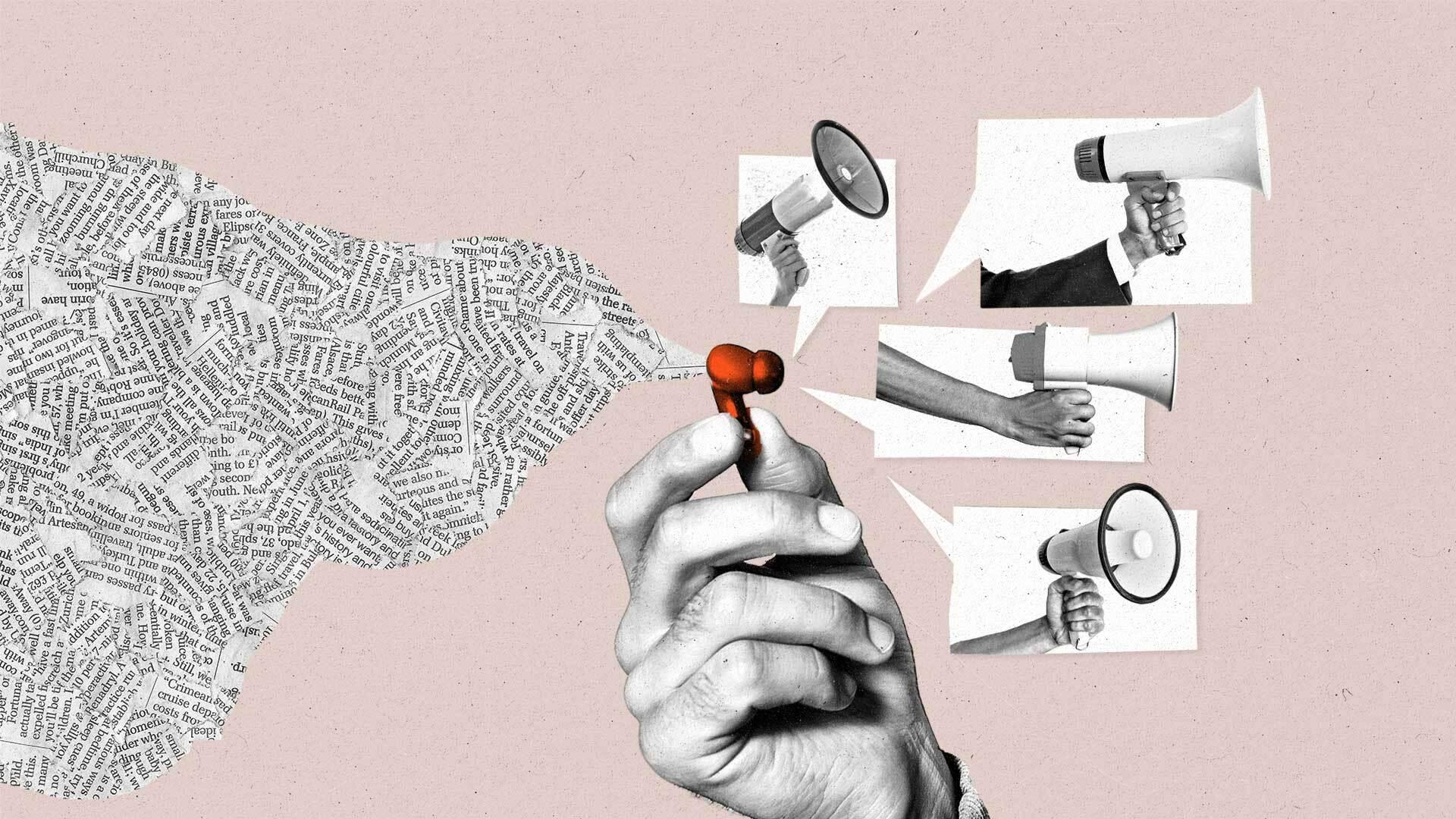One year in, Generative AI is quickly reshaping the world of podcasting

It’s a great time to be a podcast listener.
Spotify’s announcement last month that it will start voice translating some of its top podcasts, thanks in part to OpenAI’s new voice generation technology, effectively opened the floodgates not only for some of the biggest names — like Joe Rogan and Dax Shepard — to go truly global, but also for budding international podcasters to be heard in English and other markets.
Advertisers are also set to benefit from Generative AI (GenAI) audio innovation. The technology is already advancing contextual ads and dynamic creative content.
That means a brand could ditch generic promo codes like “podcast20” and create a bespoke code for each show it buys time on, like “parentinghell20” for the popular Parenting Hell podcast, says John Campbell, managing director at audio agency Rabbit & Pork.
“This allows you to track the impact of your ads down to the individual podcast, rather than all your podcast advertising activity,” he adds. “Before, this would have only been possible with lots of recording time or ads read by the presenter, where costs are higher. This then leads to greater confidence in the ROI in audio ads.”
This new breed of audio ads promises to significantly lower production costs while increasing the advertising footprint of one of the fastest-growing channels on the open internet. Coupled with tracking capabilities, audio ads could cement their place as a formidable tool in advertisers’ programmatic toolkits.
Spotify-AI and AI-created ads
The digital audio market is a growing one. Insider Intelligence estimates that the number of U.S. podcast listeners will grow 4.6 percent this year. Nearly 75 percent of all U.S. internet users are forecast to listen to digital audio this year, and time spent on the medium is set to surpass that spent on either Netflix or YouTube.
The podcast ad ecosystem could benefit significantly from Spotify’s recent announcement, as AI-translated podcasts could increase the number of ad slots “with very little effort,” says Campbell. “At the same time, companies could use the same tech to translate their own ads to appear in these new language versions.”
Voice AI startup Instreamatic’s tech can take an audio file and generate as many versions as required by a campaign in just a few minutes, which can then be served programmatically.
“Brands love the idea of having a contextual audio campaign ready in minutes instead of weeks,” says Simon Dunlop, co-founder and VP of partnerships at Instreamatic. “Plus, this creates so many opportunities for personalization and increased relevancy.”
Raoul Wedel, CEO at Wedel Software and maker of GenAI audio platform Adthos, says specific formats seem to do well — for example, Adthos’ platform is connected to sports data provider Sports Radar, which allows ads to update based on sports results.
Adthos is also looking at using first-party data to create categories within audiences, such as job seekers in a particular country. The ads can update dynamically a few months or even years down the road, tackling fears that a podcast ad could become irrelevant if the show is listened to or downloaded some time after it’s released.
The catchy jingles that normally accompany audio ads are set to receive the GenAI treatment too. In August, Meta introduced AudioCraft, a GenAI tool that lets anyone generate music or audio effects from text prompts, similar to how GenAI image tools like DALL-E work. Smaller music industry players are also getting in on GenAI frenzy.
“We are in development with a range of tools that ethically use AI to adapt composers’ intellectual property and enable 10 times variation and usability on the music user’s end from one piece of music,” says Roscoe Williamson, global creative strategy and innovation director at MassiveMusic and Songtradr.
Sound off on considerations
But this bonanza won’t come without challenges, speculates Campbell. “It’s still early days for the technology: Will a translated version of a podcast work as well in another country? Does the translation stay true to the original? And will talent be open to their voices being translated?”
Additionally, as GenAI reshapes the audio industry, significant copyright and ownership concerns are set to emerge, says Alex Menck, head of Americas at Big Sync Music.
“There are trade-offs between quality, ethics, and legal definitions. The responsibility lies with the marketing and advertising industries to prioritize a creator-centric approach when utilizing tools and platforms,” he says.
“Many global brands […] may in the future obtain music licenses and collaborate with artists to create personalized variations of licensed content tailored to specific audience preferences, locations, and contexts,” Menck adds. “If these production processes lead to increased music utilization and a more efficient content creation process, brands can ensure that AI-generated music maintains high quality while respecting the copyrights of others.”
To tackle some of these concerns, for example, Adthos doesn’t use large-language models like OpenAI’s GPT-4 to generate the prompts for dynamic creatives, instead relying on user inputs and its own technology. “More than one company actually has a stop on AI. But I think that’s a temporary situation,” says Adthos’ Wedel, citing WPP’s investment in AI as “a very big indication” of where the agency side of the industry is going.
Ultimately, the success of GenAI as a tool for audio advertisers will rest on the quality of the underlying content.
“In order for the advertising to be a success, the podcast has to succeed as well,” says Campbell. “There is a worry that we could see a future where AI is writing a script to a podcast, then creating the audio and the ads in it. At which point, users’ trust could diminish and then the advertising model too. Time will tell.”
Subscribe to The Current
Subscribe to The Current newsletter